
Oh, IB Biology. I took IB Biology SL back in my high school days. If you are looking at this syllabus, you're likely interested in taking the course or are currently enrolled in the course.
In this article, I will go over the topics covered in IB Biology Standard Level and IB Biology Higher Level, as well as the number of hours dedicated to each topic along with what the IB expects you to understand for each topic.
Feature image: Kaif_Naim and GenScript/LinkedIn
IB Biology SL and HL Core
Both IB Biology SL and HL consist of the same core requirements (95 hours). Both classes cover the same six topics in the order listed below with the same subtopics listed below:
Topic 1: Unity and Diversity—19 Hours for SL and 33 Hours for HL
|
Subtopic
|
Levels
|
IB Points to Understand
|
|
Water
|
SL and HL
|
- Water molecules are polar and hydrogen bonds form between them.
- Hydrogen bonding and dipolarity explain the cohesive, adhesive, thermal and solvent properties of water.
- Substances can be hydrophilic or hydrophobic
|
|
Nucleic Acids
|
SL and HL
|
- The nucleic acids DNA and RNA are polymers of nucleotides.
- DNA differs from RNA in the number of strands present, the base composition and the type of pentose.
- DNA is a double helix made of two antiparallel strands of nucleotides linked by hydrogen bonding between complementary base pairs.
- Nucleosomes help to supercoil the DNA.
- DNA structure suggested a mechanism for DNA replication.
- DNA polymerases can only add nucleotides to the 3' end of a primer.
- DNA replication is continuous on the leading strand and discontinuous on the lagging strand.
- DNA replication is carried out by a complex system of enzymes.
- Some regions of DNA do not code for proteins but have other important functions.
- Transcription occurs in a 5' to 3' direction.
- Nucleosomes help to regulate transcription in eukaryotes.
- Eukaryotic cells modify mRNA after transcription.
- Splicing of mRNA increases the number of different proteins an organism can produce.
- Gene expression is regulated by proteins that bind to specific base sequences in DNA.
- The environment of a cell and of an organism has an impact on gene expression.
- Initiation of translation involves assembly of the components that carry out the process.
- Synthesis of the polypeptide involves a repeated cycle of events.
- Disassembly of the components follows termination of translation.
- Free ribosomes synthesize proteins for use primarily within the cell.
- Bound ribosomes synthesize proteins primarily for secretion or for use in lysosomes.
- Translation can occur immediately after transcription in prokaryotes due to the absence of a nuclear membrane.
- The sequence and number of amino acids in the polypeptide is the primary structure.
- The secondary structure is the formation of alpha helices and beta pleated sheets stabilized by hydrogen bonding.
- The tertiary structure is the further folding of the polypeptide stabilized by interactions between R groups.
- The quaternary structure exists in proteins with more than one polypeptide chain.
|
|
Origins of Cells
|
HL only
|
- Cells can only be formed by division of pre-existing cells.
- The first cells must have arisen from non-living material.
- The origin of eukaryotic cells can be explained by the endosymbiotic theory.
|
|
Cell structure
|
SL and HL
|
- Prokaryotes have a simple cell structure without compartmentalization.
- Eukaryotes have a compartmentalized cell structure.
- Electron microscopes have a much higher resolution than light microscopes.
|
|
Viruses
|
HL only
|
- Viruses lack a metabolism and cannot therefore be treated with antibiotics. Some strains of bacteria have evolved with genes that confer resistance to antibiotics and some strains of bacteria have multiple resistance.
|
|
Diversity of organisms
|
SL and HL
|
|
|
Classification and cladistics
|
HL only
|
- A clade is a group of organisms that have evolved from a common ancestor.
- Evidence for which species are part of a clade can be obtained from the base sequences of a gene or the corresponding amino acid sequence of a protein.
- Sequence differences accumulate gradually so there is a positive correlation between the number of differences between two species and the time since they diverged from a common ancestor.
- Traits can be analogous or homologous.
- Cladograms are tree diagrams that show the most probable sequence of divergence in clades.
- Evidence from cladistics has shown that classifications of some groups based on structure did not correspond with the evolutionary origins of a group or species.
|
|
Evolution and speciation
|
SL and HL
|
- Evolution occurs when heritable characteristics of a species change.
- The fossil record provides evidence for evolution.
- Selective breeding of domesticated animals shows that artificial selection can cause evolution.
- Evolution of homologous structures by adaptive radiation explains similarities in structure when there are differences in function.
- Populations of a species can gradually diverge into separate species by evolution.
- Continuous variation across the geographical range of related populations matches the concept of gradual divergence.
|
|
Conservation of biodiversity
|
SL and HL
|
|
Topic 2: Molecular Biology—21 Hours for Both SL and HL
|
Subtopic
|
Levels
|
IB Points to Understand
|
|
Carbohydrates and lipids
|
SL and HL
|
- Monosaccharide monomers are linked together by condensation reactions to form disaccharides and polysaccharide polymers.
- Fatty acids can be saturated, monounsaturated or polyunsaturated.
- Unsaturated fatty acids can be cis or trans isomers.
- Triglycerides are formed by condensation from three fatty acids and one glycerol.
|
|
Proteins
|
SL and HL
|
- Amino acids are linked together by condensation to form polypeptides.
- There are 20 different amino acids in polypeptides synthesized on ribosomes.
- Amino acids can be linked together in any sequence giving a huge range of possible polypeptides.
- The amino acid sequence of polypeptides is coded for by genes.
- A protein may consist of a single polypeptide or more than one polypeptide linked together.
- The amino acid sequence determines the three-dimensional conformation of a protein.
- Living organisms synthesize many different proteins with a wide range of functions.
- Every individual has a unique proteome.
|
|
Membranes and membrane transport
|
SL and HL
|
- Monosaccharide monomers are linked together by condensation reactions to form disaccharides and polysaccharide polymers.
- Fatty acids can be saturated, monounsaturated or polyunsaturated.
- Unsaturated fatty acids can be cis or trans isomers.
- Triglycerides are formed by condensation from three fatty acids and one glycerol.
- Particles move across membranes by simple diffusion, facilitated diffusion, osmosis and active transport.
- The fluidity of membranes allows materials to be taken into cells by endocytosis or released by exocytosis. Vesicles move materials within cells.
|
|
Organelles and compartmentalization
|
SL and HL
|
|
|
Cell specialization
|
SL and HL
|
|
|
Gas exchange
|
SL and HL
|
- Ventilation maintains concentration gradients of oxygen and carbon dioxide between air in alveoli and blood flowing in adjacent capillaries.
- Type I pneumocytes are extremely thin alveolar cells that are adapted to carry out gas exchange.
- Type II pneumocytes secrete a solution containing surfactant that creates a moist surface inside the alveoli to prevent the sides of the alveolus adhering to each other by reducing surface tension.
- Air is carried to the lungs in the trachea and bronchi and then to the alveoli in bronchioles.
- Muscle contractions cause the pressure changes inside the thorax that force air in and out of the lungs to ventilate them.
- Different muscles are required for inspiration and expiration because muscles only do work when they contract.
|
|
Transport
|
SL and HL
|
|
|
Muscle and motility
|
HL only
|
|
|
Adaptation to environment
|
SL and HL
|
|
|
Ecological niches
|
SL and HL
|
|
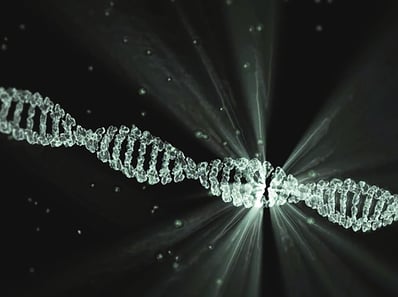
Topic 3: Interaction and Interdependence—31 Hours for SL and 48 Hours for HL
|
Subtopic
|
Levels
|
IB Points to Understand
|
|
Enzymes and metabolism
|
SL and HL
|
- Enzymes have an active site to which specific substrates bind.
- Enzyme catalysis involves molecular motion and the collision of substrates with the active site.
- Temperature, pH and substrate concentration affect the rate of activity of enzymes.
- Enzymes can be denatured.
- Immobilized enzymes are widely used in industry.
|
|
Cell respiration
|
SL and HL
|
- Cell respiration is the controlled release of energy from organic compounds to produce ATP.
- ATP from cell respiration is immediately available as a source of energy in the cell.
- Anaerobic cell respiration gives a small yield of ATP from glucose.
- Aerobic cell respiration requires oxygen and gives a large yield of ATP from glucose.
- Cell respiration involves the oxidation and reduction of electron carriers.
- Phosphorylation of molecules makes them less stable.
- In glycolysis, glucose is converted to pyruvate in the cytoplasm.
- Glycolysis gives a small net gain of ATP without the use of oxygen.
- In aerobic cell respiration pyruvate is decarboxylated and oxidized, and converted into acetyl compound and attached to coenzyme A to form acetyl coenzyme A in the link reaction.
- In the Krebs cycle, the oxidation of acetyl groups is coupled to the reduction of hydrogen carriers, liberating carbon dioxide.
- Energy released by oxidation reactions is carried to the cristae of the mitochondria by reduced NAD and FAD.
- Transfer of electrons between carriers in the electron transport chain in the membrane of the cristae is coupled to proton pumping.
- In chemiosmosis protons diffuse through ATP synthase to generate ATP.
- Oxygen is needed to bind with the free protons to maintain the hydrogen gradient, resulting in the formation of water.
- The structure of the mitochondrion is adapted to the function it performs.
|
|
Photosynthesis
|
SL and HL
|
- Photosynthesis is the production of carbon compounds in cells using light energy.
- Visible light has a range of wavelengths with violet the shortest wavelength and red the longest.
- Chlorophyll absorbs red and blue light most effectively and reflects green light more than other colours.
- Oxygen is produced in photosynthesis from the photolysis of water.
- Energy is needed to produce carbohydrates and other carbon compounds from carbon dioxide.
- Temperature, light intensity and carbon dioxide concentration are possible limiting factors on the rate of photosynthesis.
|
|
Chemical Signaling
|
HL only
|
|
|
Neural signalling
|
SL and HL
|
|
|
Integration of body systems
|
SL and HL
|
|
|
Defence against disease
|
SL and HL
|
|
|
Populations and communities
|
SL and HL
|
|
|
Transfer of energy and matter
|
SL and HL
|
|

Topic 4: Continuity and Change—34 Hours for SL and 60 Hours for HL
|
Subtopic
|
Levels
|
IB Points to Understand
|
|
DNA replication
|
SL and HL
|
|
|
Protein synthesis
|
SL and HL
|
|
|
Mutations and gene editing
|
SL and HL
|
|
|
Cell and nuclear division
|
SL and HL
|
- Mitosis is division of the nucleus into two genetically identical daughter nuclei.
- Chromosomes condense by supercoiling during mitosis.
- Cytokinesis occurs after mitosis and is different in plant and animal cells.
- Interphase is a very active phase of the cell cycle with many processes occurring in the nucleus and cytoplasm.
- Cyclins are involved in the control of the cell cycle.
- Mutagens, oncogenes and metastasis are involved in the development of primary and secondary tumours.
|
|
Gene expression
|
HL only
|
|
|
Water potential
|
SL and HL
|
|
|
Reproduction
|
SL and HL
|
|
|
Inheritance
|
SL and HL
|
- Mendel discovered the principles of inheritance with experiments in which large numbers of pea plants were crossed.
- Gametes are haploid so contain only one allele of each gene.
- The two alleles of each gene separate into different haploid daughter nuclei during meiosis.
- Fusion of gametes results in diploid zygotes with two alleles of each gene that may be the same allele or different alleles.
- Dominant alleles mask the effects of recessive alleles but co-dominant alleles have joint effects.
- Many genetic diseases in humans are due to recessive alleles of autosomal genes, although some genetic diseases are due to dominant or co-dominant alleles.
- Some genetic diseases are sex-linked. The pattern of inheritance is different with sex-linked genes due to their location on sex chromosomes.
- Many genetic diseases have been identified in humans but most are very rare.
- Radiation and mutagenic chemicals increase the mutation rate and can cause genetic diseases and cancer.
- Gene loci are said to be linked if on the same chromosome.
- Unlinked genes segregate independently as a result of meiosis.
- Variation can be discrete or continuous.
- The phenotypes of polygenic characteristics tend to show continuous variation.
- Chi-squared tests are used to determine whether the difference between an observed and expected frequency distribution is statistically significant.
|
|
Homeostasis
|
SL and HL
|
|
|
Natural selection
|
SL and HL
|
- Natural selection can only occur if there is variation among members of the same species.
- Mutation, meiosis and sexual reproduction cause variation between individuals in a species.
- Adaptations are characteristics that make an individual suited to its environment and way of life.
- Species tend to produce more offspring than the environment can support.
- Individuals that are better adapted tend to survive and produce more offspring while the less well adapted tend to die or produce fewer offspring.
- Individuals that reproduce pass on characteristics to their offspring.
- Natural selection increases the frequency of characteristics that make individuals better adapted and decreases the frequency of other characteristics leading to changes within the species.
|
|
Sustainability and change
|
SL and HL
|
|
|
Climate change
|
SL and HL
|
- Carbon dioxide and water vapour are the most significant greenhouse gases.
- Other gases including methane and nitrogen oxides have less impact.
- The impact of a gas depends on its ability to absorb long wave radiation as well as on its concentration in the atmosphere.
- The warmed Earth emits longer wavelength radiation (heat).
- Longer wave radiation is absorbed by greenhouse gases that retain the heat in the atmosphere.
- Global temperatures and climate patterns are influenced by concentrations of greenhouse gases.
- There is a correlation between rising atmospheric concentrations of carbon dioxide since the start of the industrial revolution 200 years ago and average global temperatures.
- Recent increases in atmospheric carbon dioxide are largely due to increases in the combustion of fossilized organic matter.
|
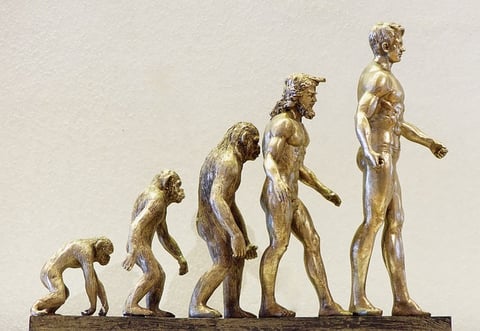
Topic 5: Experimental Programs—40 Hours for SL and 60 Hours for HL
|
Subtopic
|
SL
|
HL
|
|
Practical work
|
20 hours
|
40 hours
|
|
Collaborative sciences project
|
10 hours
|
10 hours
|
|
Scientific investigation
|
10 hours
|
10 hours
|
Additional Higher Level Topics
Only students taking IB Biology HL cover these topics. They consist of 60 hours of study.
Topic 7: Nucleic Acids—9 Hours for HL Only
| Subtopic |
Subtopic Number |
IB Points to Understand |
DNA structure and replication
(HL ONLY) |
7.1 |
- Nucleosomes help to supercoil the DNA.
- DNA structure suggested a mechanism for DNA replication.
- DNA polymerases can only add nucleotides to the 3' end of a primer.
- DNA replication is continuous on the leading strand and discontinuous on the lagging strand.
- DNA replication is carried out by a complex system of enzymes.
- Some regions of DNA do not code for proteins but have other important functions.
|
Transcription and gene expression
(HL ONLY)
|
7.2 |
- Transcription occurs in a 5' to 3' direction.
- Nucleosomes help to regulate transcription in eukaryotes.
- Eukaryotic cells modify mRNA after transcription.
- Splicing of mRNA increases the number of different proteins an organism can produce.
- Gene expression is regulated by proteins that bind to specific base sequences in DNA.
- The environment of a cell and of an organism has an impact on gene expression.
|
Translation
(HL ONLY) |
7.3 |
- Initiation of translation involves assembly of the components that carry out the process.
- Synthesis of the polypeptide involves a repeated cycle of events.
- Disassembly of the components follows termination of translation.
- Free ribosomes synthesize proteins for use primarily within the cell.
- Bound ribosomes synthesize proteins primarily for secretion or for use in lysosomes.
- Translation can occur immediately after transcription in prokaryotes due to the absence of a nuclear membrane.
- The sequence and number of amino acids in the polypeptide is the primary structure.
- The secondary structure is the formation of alpha helices and beta pleated sheets stabilized by hydrogen bonding.
- The tertiary structure is the further folding of the polypeptide stabilized by interactions between R groups.
- The quaternary structure exists in proteins with more than one polypeptide chain.
|

Topic 8: Metabolism, Cell Respiration, and Photosynthesis—14 Hours for HL Only
| Subtopic |
Subtopic Number |
IB Points to Understand |
| Metabolism (HL ONLY) |
8.1 |
- Metabolic pathways consist of chains and cycles of enzyme-catalysed reactions.
- Enzymes lower the activation energy of the chemical reactions that they catalyse.
- Enzyme inhibitors can be competitive or non-competitive.
- Metabolic pathways can be controlled by end-product inhibition.
|
| Cell respiration (HL ONLY) |
8.2 |
- Cell respiration involves the oxidation and reduction of electron carriers.
- Phosphorylation of molecules makes them less stable.
- In glycolysis, glucose is converted to pyruvate in the cytoplasm.
- Glycolysis gives a small net gain of ATP without the use of oxygen.
- In aerobic cell respiration pyruvate is decarboxylated and oxidized, and converted into acetyl compound and attached to coenzyme A to form acetyl coenzyme A in the link reaction.
- In the Krebs cycle, the oxidation of acetyl groups is coupled to the reduction of hydrogen carriers, liberating carbon dioxide.
- Energy released by oxidation reactions is carried to the cristae of the mitochondria by reduced NAD and FAD.
- Transfer of electrons between carriers in the electron transport chain in the membrane of the cristae is coupled to proton pumping.
- In chemiosmosis protons diffuse through ATP synthase to generate ATP.
- Oxygen is needed to bind with the free protons to maintain the hydrogen gradient, resulting in the formation of water.
- The structure of the mitochondrion is adapted to the function it performs.
|
| Photosynthesis (HL ONLY) |
8.3 |
- Light-dependent reactions take place in the intermembrane space of the thylakoids.
- Light-independent reactions take place in the stroma.
- Reduced NADP and ATP are produced in the light-dependent reactions.
- Absorption of light by photosystems generates excited electrons.
- Photolysis of water generates electrons for use in the light-dependent reactions.
- Transfer of excited electrons occurs between carriers in thylakoid membranes.
- Excited electrons from Photosystem II are used to contribute to generate a proton gradient.
- ATP synthase in thylakoids generates ATP using the proton gradient.
- Excited electrons from Photosystem I are used to reduce NADP.
- In the light-independent reactions a carboxylase catalyses the carboxylation of ribulose bisphosphate.
- Glycerate 3-phosphate is reduced to triose phosphate using reduced NADP and ATP.
- Triose phosphate is used to regenerate RuBP and produce carbohydrates.
- Ribulose bisphosphate is reformed using ATP.
- The structure of the chloroplast is adapted to its function in photosynthesis.
|
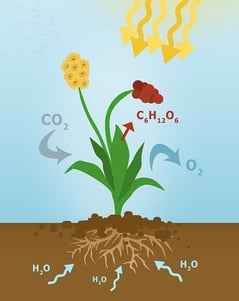
Topic 9: Plant Biology—13 Hours for HL Only
| Subtopic |
Subtopic Number |
IB Points to Understand |
| Transport in the xylem of plants (HL ONLY) |
9.1 |
- Transpiration is the inevitable consequence of gas exchange in the leaf.
- Plants transport water from the roots to the leaves to replace losses from transpiration.
- The cohesive property of water and the structure of the xylem vessels allow transport under tension.
- The adhesive property of water and evaporation generate tension forces in leaf cell walls.
- Active uptake of mineral ions in the roots causes absorption of water by osmosis.
|
| Transport in the phloem of plants (HL ONLY) |
9.2 |
- Plants transport organic compounds from sources to sinks.
- Incompressibility of water allows transport along hydrostatic pressure gradients.
- Active transport is used to load organic compounds into phloem sieve tubes at the source.
- High concentrations of solutes in the phloem at the source lead to water uptake by osmosis.
- Raised hydrostatic pressure causes the contents of the phloem to flow towards sinks.
|
| Growth in plants (HL ONLY) |
9.3 |
- Undifferentiated cells in the meristems of plants allow indeterminate growth.
- Mitosis and cell division in the shoot apex provide cells needed for extension of the stem and development of leaves.
- Plant hormones control growth in the shoot apex.
- Plant shoots respond to the environment by tropisms.
- Auxin efflux pumps can set up concentration gradients of auxin in plant tissue.
- Auxin influences cell growth rates by changing the pattern of gene expression.
|
| Reproduction in plants (HL ONLY) |
9.4 |
- Flowering involves a change in gene expression in the shoot apex.
- The switch to flowering is a response to the length of light and dark periods in many plants.
- Success in plant reproduction depends on pollination, fertilization and seed dispersal.
- Most flowering plants use mutualistic relationships with pollinators in sexual reproduction.
|
Topic #10: Genetics and Evolution—8 Hours for HL Only
| Subtopic |
Subtopic Number |
IB Points to Understand |
| Meiosis (HL ONLY) |
10.1
|
- Chromosomes replicate in interphase before meiosis.
- Crossing over is the exchange of DNA material between non-sister homologous chromatids.
- Crossing over produces new combinations of alleles on the chromosomes of the haploid cells.
- Chiasmata formation between non-sister chromatids can result in an exchange of alleles.
- Homologous chromosomes separate in meiosis I.
- Sister chromatids separate in meiosis II.
- Independent assortment of genes is due to the random orientation of pairs of homologous chromosomes in meiosis I.
|
| Inheritance (HL ONLY) |
10.2 |
- Gene loci are said to be linked if on the same chromosome.
- Unlinked genes segregate independently as a result of meiosis.
- Variation can be discrete or continuous.
- The phenotypes of polygenic characteristics tend to show continuous variation.
- Chi-squared tests are used to determine whether the difference between an observed and expected frequency distribution is statistically significant.
|
| Gene pools and speciation (HL ONLY) |
10.3 |
- A gene pool consists of all the genes and their different alleles, present in an interbreeding population.
- Evolution requires that allele frequencies change with time in populations.
- Reproductive isolation of populations can be temporal, behavioural or geographic.
- Speciation due to divergence of isolated populations can be gradual.
- Speciation can occur abruptly.
|
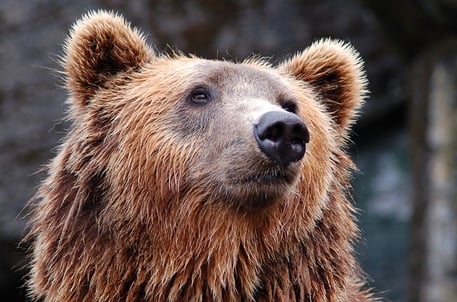
Topic 11: Animal Physiology—16 Hours for HL Only
| Subtopic |
Subtopic Number |
IB Points to Understand |
| Antibody production and vaccination (HL ONLY) |
11.1 |
- Every organism has unique molecules on the surface of its cells.
- Pathogens can be species-specific although others can cross species barriers.
- B lymphocytes are activated by T lymphocytes in mammals.
- Activated B cells multiply to form clones of plasma cells and memory cells.
- Plasma cells secrete antibodies.
- Antibodies aid the destruction of pathogens.
- White cells release histamine in response to allergens.
- Histamines cause allergic symptoms.
- Immunity depends upon the persistence of memory cells.
- Vaccines contain antigens that trigger immunity but do not cause the disease.
- Fusion of a tumour cell with an antibody-producing plasma cell creates a hybridoma cell.
- Monoclonal antibodies are produced by hybridoma cells.
|
| Movement (HL ONLY) |
11.2 |
- Bones and exoskeletons provide anchorage for muscles and act as levers.
- Synovial joints allow certain movements but not others.
- Movement of the body requires muscles to work in antagonistic pairs.
- Skeletal muscle fibres are multinucleate and contain specialized endoplasmic reticulum.
- Muscle fibres contain many myofibrils.
- Each myofibril is made up of contractile sarcomeres.
- The contraction of the skeletal muscle is achieved by the sliding of actin and myosin filaments.
- ATP hydrolysis and cross bridge formation are necessary for the filaments to slide.
- Calcium ions and the proteins tropomyosin and troponin control muscle contractions.
|
| The kidney and osmoregulation (HL ONLY) |
11.3 |
- Animals are either osmoregulators or osmoconformers.
- The Malpighian tubule system in insects and the kidney carry out osmoregulation and removal of nitrogenous wastes.
- The composition of blood in the renal artery is different from that in the renal vein.
- The ultrastructure of the glomerulus and Bowman's capsule facilitate ultrafiltration.
- The proximal convoluted tubule selectively reabsorbs useful substances by active transport.
- The loop of Henle maintains hypertonic conditions in the medulla.
- ADH controls reabsorption of water in the collecting duct.
- The length of the loop of Henle is positively correlated with the need for water conservation in animals.
- The type of nitrogenous waste in animals is correlated with evolutionary history and habitat.
|
| Sexual reproduction (HL ONLY) |
11.4 |
- Spermatogenesis and oogenesis both involve mitosis, cell growth, two divisions of meiosis and differentiation.
- Processes in spermatogenesis and oogenesis result in different numbers of gametes with different amounts of cytoplasm.
- Fertilization in animals can be internal or external.
- Fertilization involves mechanisms that prevent polyspermy.
- Implantation of the blastocyst in the endometrium is essential for the continuation of pregnancy.
- HCG stimulates the ovary to secrete progesterone during early pregnancy.
- The placenta facilitates the exchange of materials between the mother and fetus.
- Estrogen and progesterone are secreted by the placenta once it has formed.
- Birth is mediated by positive feedback involving estrogen and oxytocin.
|
Options
As a part of the IB Biology class, you'll cover one additional subject from the options below. (Typically you don't choose, but rather your teacher does.) Whichever option you or your teacher chooses, you'll cover three or four topics (15 hours total) for SL and an additional two or three topics (25 hours total) for HL.
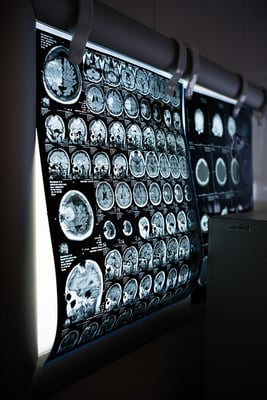
Option A: Neurobiology and Behaviour—15 Hours for SL and 25 hours for HL
| Subtopic |
Subtopic Number |
IB Points to Understand |
| Neural development |
A.1 |
- The neural tube of embryonic chordates is formed by infolding of ectoderm followed by elongation of the tube.
- Neurons are initially produced by differentiation in the neural tube.
- Immature neurons migrate to a final location.
- An axon grows from each immature neuron in response to chemical stimuli.
- Some axons extend beyond the neural tube to reach other parts of the body.
- A developing neuron forms multiple synapses.
- Synapses that are not used do not persist.
- Neural pruning involves the loss of unused neurons.
- The plasticity of the nervous system allows it to change with experience.
|
| The human brain |
A.2 |
- The anterior part of the neural tube expands to form the brain.
- Different parts of the brain have specific roles.
- The autonomic nervous system controls involuntary processes in the body using centres located mainly in the brain stem.
- The cerebral cortex forms a larger proportion of the brain and is more highly developed in humans than other animals.
- The human cerebral cortex has become enlarged principally by an increase in total area with extensive folding to accommodate it within the cranium.
- The cerebral hemispheres are responsible for higher order functions.
- The left cerebral hemisphere receives sensory input from sensory receptors in the right side of the body and the right side of the visual field in both eyes and vice versa for the right hemisphere.
- The left cerebral hemisphere controls muscle contraction in the right side of the body and vice versa for the right hemisphere.
- Brain metabolism requires large energy inputs.
|
| Perception of stimuli |
A.3 |
- Receptors detect changes in the environment.
- Rods and cones are photoreceptors located in the retina.
- Rods and cones differ in their sensitivities to light intensities and wavelengths.
- Bipolar cells send the impulses from rods and cones to ganglion cells.
- Ganglion cells send messages to the brain via the optic nerve.
- The information from the right field of vision from both eyes is sent to the left part of the visual cortex and vice versa.
- Structures in the middle ear transmit and amplify sound.
- Sensory hairs of the cochlea detect sounds of specific wavelengths.
- Impulses caused by sound perception are transmitted to the brain via the auditory nerve.
- Hair cells in the semicircular canals detect movement of the head.
|
Additional HL Neurobiology and Behaviour Topics—10 More Hours for HL
| Subtopic |
Subtopic Number |
IB Points to Understand |
| Innate and learned behaviour (HL ONLY) |
A.4 |
- Innate behaviour is inherited from parents and so develops independently of the environment.
- Autonomic and involuntary responses are referred to as reflexes.
- Reflex arcs comprise the neurons that mediate reflexes.
- Reflex conditioning involves forming new associations.
- Learned behaviour develops as a result of experience.
- Imprinting is learning occurring at a particular life stage and is independent of the consequences of behaviour.
- Operant conditioning is a form of learning that consists of trial and error experiences.
- Learning is the acquisition of skill or knowledge.
- Memory is the process of encoding, storing and accessing information.
|
| Neuropharmacology (HL ONLY) |
A.5 |
- Some neurotransmitters excite nerve impulses in postsynaptic neurons and others inhibit them.
- Nerve impulses are initiated or inhibited in post-synaptic neurons as a result of summation of all excitatory and inhibitory neurotransmitters received from presynaptic neurones.
- Many different slow-acting neurotransmitters modulate fast synaptic transmission in the brain.
- Memory and learning involve changes in neurones caused by slow-acting neurotransmitters.
- Psychoactive drugs affect the brain by either increasing or decreasing postsynaptic transmission.
- Anesthetics act by interfering with neural transmission between areas of sensory perception and the CNS.
- Stimulant drugs mimic the stimulation provided by the sympathetic nervous system.
- Addiction can be affected by genetic predisposition, social environment and dopamine secretion.
|
| Ethology (HL ONLY) |
A.6 |
- Ethology is the study of animal behaviour in natural conditions.
- Natural selection can change the frequency of observed animal behaviour.
- Behaviour that increases the chances of survival and reproduction will become more prevalent in a population.
- Learned behaviour can spread through a population or be lost from it more rapidly than innate behaviour.
|
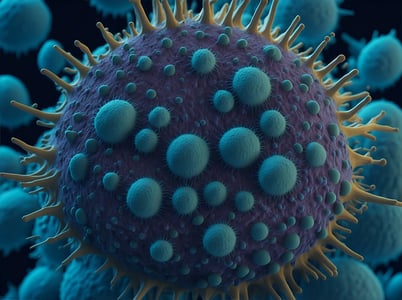
Option B: Biotechnology and Bioinformatics—15 Hours for SL and HL
| Subtopic |
Subtopic Number |
IB Points to Understand |
| Microbiology: organisms in industry |
B.1 |
- Microorganisms are metabolically diverse.
- Microorganisms are used in industry because they are small and have a fast growth rate.
- Pathway engineering optimizes genetic and regulatory processes within microorganisms.
- Pathway engineering is used industrially to produce metabolites of interest.
- Fermenters allow large-scale production of metabolites by microorganisms.
- Fermentation is carried out by batch or continuous culture.
- Microorganisms in fermenters become limited by their own waste products.
- Probes are used to monitor conditions within fermenters.
- Conditions are maintained at optimal levels for the growth of the microorganisms being cultured.
|
| Biotechnology in agriculture |
B.2 |
- Transgenic organisms produce proteins that were not previously part of their species' proteome.
- Genetic modification can be used to overcome environmental resistance to increase crop yields.
- Genetically modified crop plants can be used to produce novel products.
- Bioinformatics plays a role in identifying target genes.
- The target gene is linked to other sequences that control its expression.
- An open reading frame is a significant length of DNA from a start codon to a stop codon.
- Marker genes are used to indicate successful uptake.
- Recombinant DNA must be inserted into the plant cell and taken up by its chromosome or chloroplast DNA.
- Recombinant DNA can be introduced into whole plants, leaf discs or protoplasts.
- Recombinant DNA can be introduced by direct physical and chemical methods or indirectly by vectors.
|
| Environmental protection |
B.3 |
- Responses to pollution incidents can involve bioremediation combined with physical and chemical procedures.
- Microorganisms are used in bioremediation.
- Some pollutants are metabolized by microorganisms.
- Cooperative aggregates of microorganisms can form biofilms.
- Biofilms possess emergent properties.
- Microorganisms growing in a biofilm are highly resistant to antimicrobial agents.
- Microorganisms in biofilms cooperate through quorum sensing.
- Bacteriophages are used in the disinfection of water systems.
|
Additional HL Biotechnology and Bioinfomatics Topics—10 More Hours for HL
| Subtopic |
Subtopic Number |
IB Points to Understand |
Medicine
(HL ONLY) |
B.4 |
- Infection by a pathogen can be detected by the presence of its genetic material or by its antigens.
- Predisposition to a genetic disease can be detected through the presence of markers.
- DNA microarrays can be used to test for genetic predisposition or to diagnose the disease.
- Metabolites that indicate disease can be detected in blood and urine.
- Tracking experiments are used to gain information about the localization and interaction of a desired protein.
- Biopharming uses genetically modified animals and plants to produce proteins for therapeutic use.
- Viral vectors can be used in gene therapy.
|
Bioinformatics
(HL ONLY) |
B.5 |
- Databases allow scientists easy access to information.
- The body of data stored in databases is increasing exponentially.
- BLAST searches can identify similar sequences in different organisms.
- Gene function can be studied using model organisms with similar sequences.
- Sequence alignment software allows comparison of sequences from different organisms.
- BLASTn allows nucleotide sequence alignment while BLASTp allows protein alignment.
- Databases can be searched to compare newly identified sequences with sequences of known function in other organisms.
- Multiple sequence alignment is used in the study of phylogenetics.
- EST is an expressed sequence tag that can be used to identify potential genes.
|
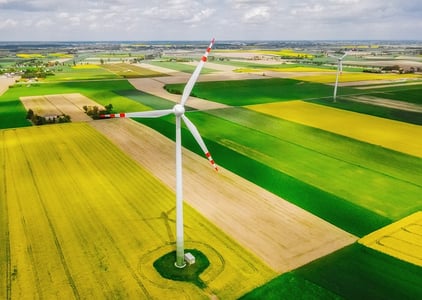
Option C: Ecology and Conservation—15 Hours for SL and HL
| Subtopic |
Subtopic Number |
IB Points to Understand |
| Species and communities |
C.1 |
- The distribution of species is affected by limiting factors.
- Community structure can be strongly affected by keystone species.
- Each species plays a unique role within a community because of the unique combination of its spatial habitat and interactions with other species.
- Interactions between species in a community can be classified according to their effect.
- Two species cannot survive indefinitely in the same habitat if their niches are identical.
|
| Communities and ecosystems |
C.2 |
- Most species occupy different trophic levels in multiple food chains.
- A food web shows all the possible food chains in a community.
- The percentage of ingested energy converted to biomass is dependent on the respiration rate.
- The type of stable ecosystem that will emerge in an area is predictable based on climate.
- In closed ecosystems energy but not matter is exchanged with the surroundings.
- Disturbance influences the structure and rate of change within ecosystems.
|
| Impacts of humans on ecosystems |
C.3 |
- Introduced alien species can escape into local ecosystems and become invasive.
- Competitive exclusion and the absence of predators can lead to reduction in the numbers of endemic species when alien species become invasive.
- Pollutants become concentrated in the tissues of organisms at higher trophic levels by biomagnification.
- Macroplastic and microplastic debris has accumulated in marine environments.
|
| Conservation of biodiversity |
C.4 |
- An indicator species is an organism used to assess a specific environmental condition.
- Relative numbers of indicator species can be used to calculate the value of a biotic index.
- In situ conservation may require active management of nature reserves or national parks.
- Ex situ conservation is the preservation of species outside their natural habitats.
- Biogeographic factors affect species diversity.
- Richness and evenness are components of biodiversity.
|
Additional HL Ecology and Conservation Topics—10 More Hours for HL
| Subtopic |
Subtopic Number |
IB Points to Understand |
| Population ecology (HL ONLY) |
C.5 |
- Sampling techniques are used to estimate population size.
- The exponential growth pattern occurs in an ideal, unlimited environment.
- Population growth slows as a population reaches the carrying capacity of the environment.
- The phases shown in the sigmoid curve can be explained by relative rates of natality, mortality, immigration and emigration.
- Limiting factors can be top down or bottom up.
|
| Nitrogen and phosphorus cycles (HL ONLY) |
C.6 |
- Nitrogen-fixing bacteria convert atmospheric nitrogen to ammonia.
- Rhizobium associates with roots in a mutualistic relationship.
- In the absence of oxygen denitrifying bacteria reduce nitrate in the soil.
- Phosphorus can be added to the phosphorus cycle by application of fertilizer or removed by the harvesting of agricultural crops.
- The rate of turnover in the phosphorus cycle is much lower than the nitrogen cycle.
- Availability of phosphate may become limiting to agriculture in the future.
- Leaching of mineral nutrients from agricultural land into rivers causes eutrophication and leads to increased biochemical oxygen demand.
|
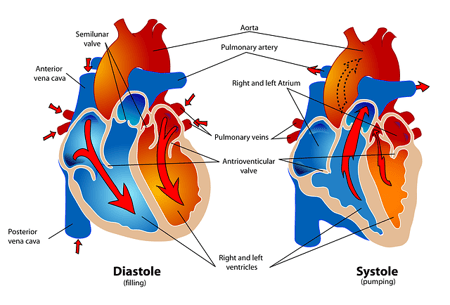
Option D: Human Physiology—15 Hours for SL and HL
| Subtopic |
Subtopic Number |
IB Points to Understand |
| Human nutrition |
D.1 |
- Essential nutrients cannot be synthesized by the body, therefore they have to be included in the diet.
- Dietary minerals are essential chemical elements.
- Vitamins are chemically diverse carbon compounds that cannot be synthesized by the body.
- Some fatty acids and some amino acids are essential.
- Lack of essential amino acids affects the production of proteins.
- Malnutrition may be caused by a deficiency, imbalance or excess of nutrients in the diet.
- Appetite is controlled by a centre in the hypothalamus.
- Overweight individuals are more likely to suffer hypertension and type II diabetes.
- Starvation can lead to breakdown of body tissue.
|
| Digestion |
D.2 |
- Nervous and hormonal mechanisms control the secretion of digestive juices.
- Exocrine glands secrete to the surface of the body or the lumen of the gut.
- The volume and content of gastric secretions are controlled by nervous and hormonal mechanisms.
- Acid conditions in the stomach favour some hydrolysis reactions and help to control pathogens in ingested food.
- The structure of cells of the epithelium of the villi is adapted to the absorption of food.
- The rate of transit of materials through the large intestine is positively correlated with their fibre content.
- Materials not absorbed are egested.
|
| Functions of the liver |
D.3 |
- The liver removes toxins from the blood and detoxifies them.
- Components of red blood cells are recycled by the liver.
- The breakdown of erythrocytes starts with phagocytosis of red blood cells by Kupffer cells.
- Iron is carried to the bone marrow to produce hemoglobin in new red blood cells.
- Surplus cholesterol is converted to bile salts.
- Endoplasmic reticulum and Golgi apparatus in hepatocytes produce plasma proteins.
- The liver intercepts blood from the gut to regulate nutrient levels.
- Some nutrients in excess can be stored in the liver.
|
| The heart |
D.4 |
- Structure of cardiac muscle cells allows propagation of stimuli through the heart wall.
- Signals from the sinoatrial node that cause contraction cannot pass directly from atria to ventricles.
- There is a delay between the arrival and passing on of a stimulus at the atrioventricular node.
- This delay allows time for atrial systole before the atrioventricular valves close.
- Conducting fibres ensure coordinated contraction of the entire ventricle wall.
- Normal heart sounds are caused by the atrioventricular valves and semilunar valves closing causing changes in blood flow.
|
Additional HL Human Physiology Topics—10 More Hours for HL
| Subtopic |
Subtopic Number |
IB Points to Understand |
| Hormones and metabolism (HL ONLY) |
D.5 |
- Endocrine glands secrete hormones directly into the bloodstream.
- Steroid hormones bind to receptor proteins in the cytoplasm of the target cell to form a receptor–hormone complex.
- The receptor–hormone complex promotes the transcription of specific genes.
- Peptide hormones bind to receptors in the plasma membrane of the target cell.
- Binding of hormones to membrane receptors activates a cascade mediated by a second messenger inside the cell.
- The hypothalamus controls hormone secretion by the anterior and posterior lobes of the pituitary gland.
- Hormones secreted by the pituitary control growth, developmental changes, reproduction and homeostasis.
|
| Transport of respiratory gases (HL ONLY) |
D.6 |
- Oxygen dissociation curves show the affinity of hemoglobin for oxygen.
- Carbon dioxide is carried in solution and bound to hemoglobin in the blood.
- Carbon dioxide is transformed in red blood cells into hydrogencarbonate ions.
- The Bohr shift explains the increased release of oxygen by hemoglobin in respiring tissues.
- Chemoreceptors are sensitive to changes in blood pH.
- The rate of ventilation is controlled by the respiratory control centre in the medulla oblongata.
- During exercise the rate of ventilation changes in response to the amount of CO2 in the blood.
- Fetal hemoglobin is different from adult hemoglobin allowing the transfer of oxygen in the placenta onto the fetal hemoglobin.
|
Practical Scheme of Work
You also need to complete experiments and experimental reports as a part of any IB Science course. For SL, there is 40 hours of material. For HL, there is 60 hours of material. Here are the activities:
Practical work: 20 hours for SL and 40 hours for HL
Lab work in class counts towards these hours
Individual scientific investigation (internal assessment-IA): 10 hours for SL and HL
A lab project along with a report that counts as 20% of your IB exam scores (written exam counts for the other 80%)
Collaborative sciences project: 10 hours for SL and HL
Students are separated into groups and must conduct an experiment and write a report.

What's Next?
Thinking about taking AP Biology instead? Learn what's covered in a AP Bio here.
Looking for more in-depth explorations of the topics mentioned on this syllabus? Read our subject-specific articles on topics varying from the photosynthesis equation to homologous and analogous structures to cell biology (including cell theory, enzymes, and how the cell membrane and endoplasmic reticulum work).
Are you hoping to squeeze in some extra IB classes? Learn about the IB courses offered online.
Studying for the SAT? Check out our complete guide to the SAT. Taking the SAT in the next month? Check out our guide to cramming.
Not sure where you want to go to college? Check out our guide to finding your target school.















































 Holly R.
Holly R.